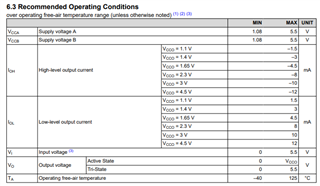Other Parts Discussed in Thread: TXU0304, TXU0202, TXU0101, SN74LVC125A, SN74AXC4T245, SN74LVC2G34
Hello,
I'm trying to interface a modem (uBlox SARA 422S) to an ATmega1284P through a SPI/RS232 transceiver (PI7C9X760).

1.8V (line 1V8) is provided by modem when it is running (PWR_SW pull down and RESET done). Modem uses 1.8V logic. Thus PI7 is powered by 1V8 line.
TXB0106 is between processor and SPI/RS232 bridge as it provided isolation between SPI bus and PI7 bus.
In this configuration, TXB0106 doesn't run as expected. I have read again datasheet and I have seen that OE should be tied to VCCA after VCCA and VCCB are stable. Is a simple reset circuit (RC) enough to generate OE signal ? For example this kind of reset:

And can TXB0106 run in this configuration?
Best regards,
JB


